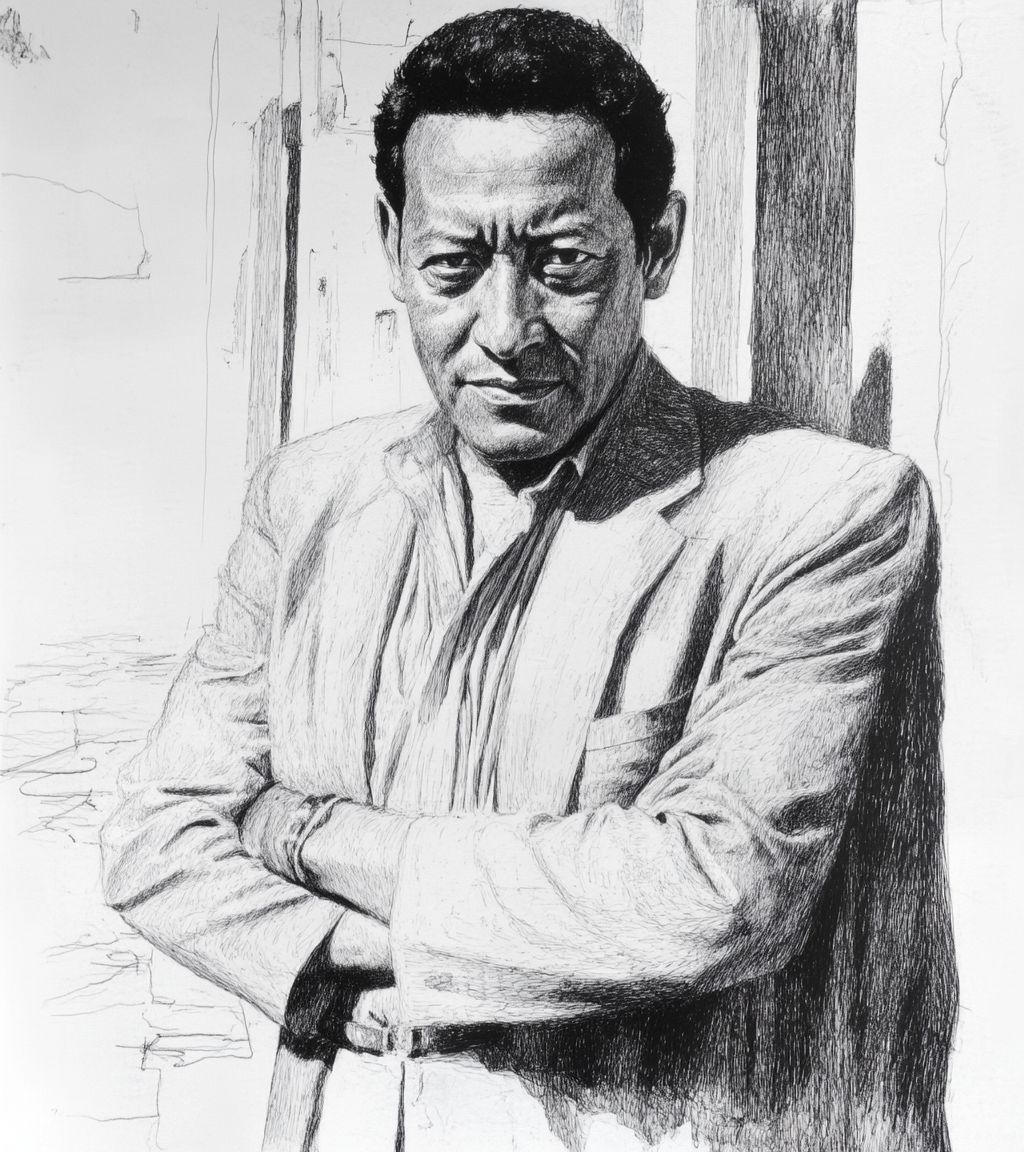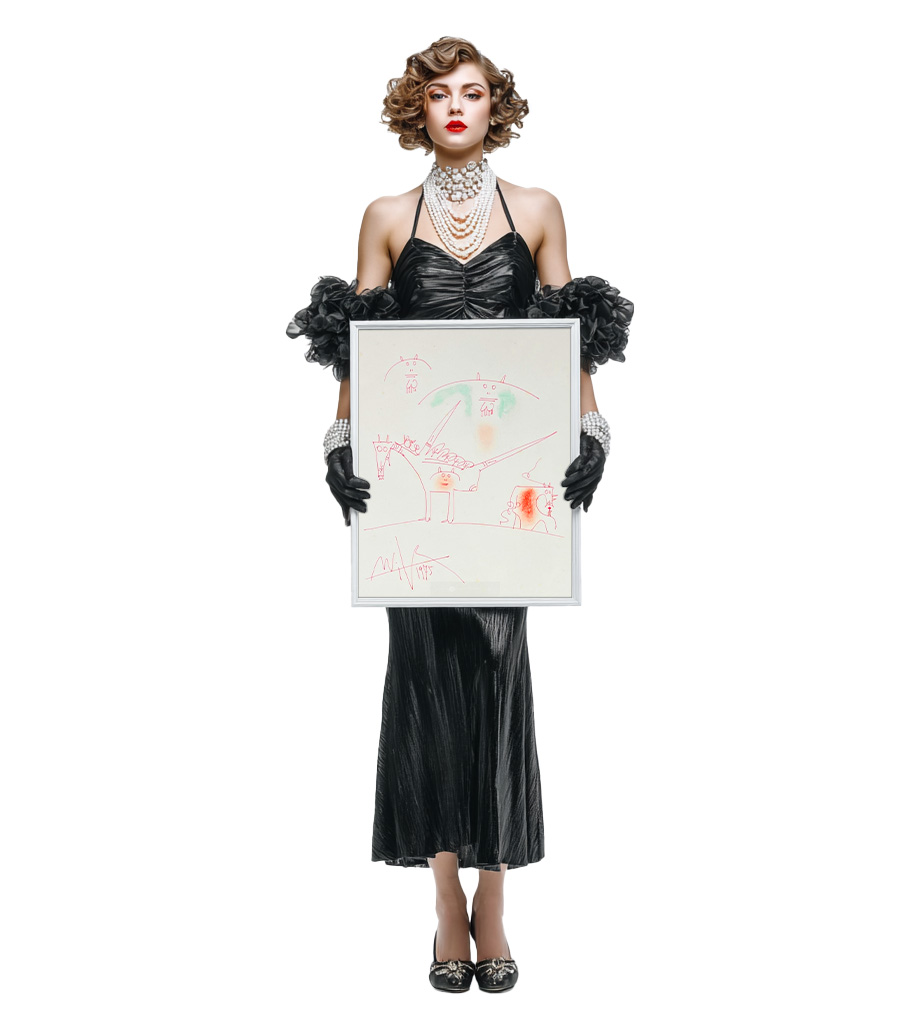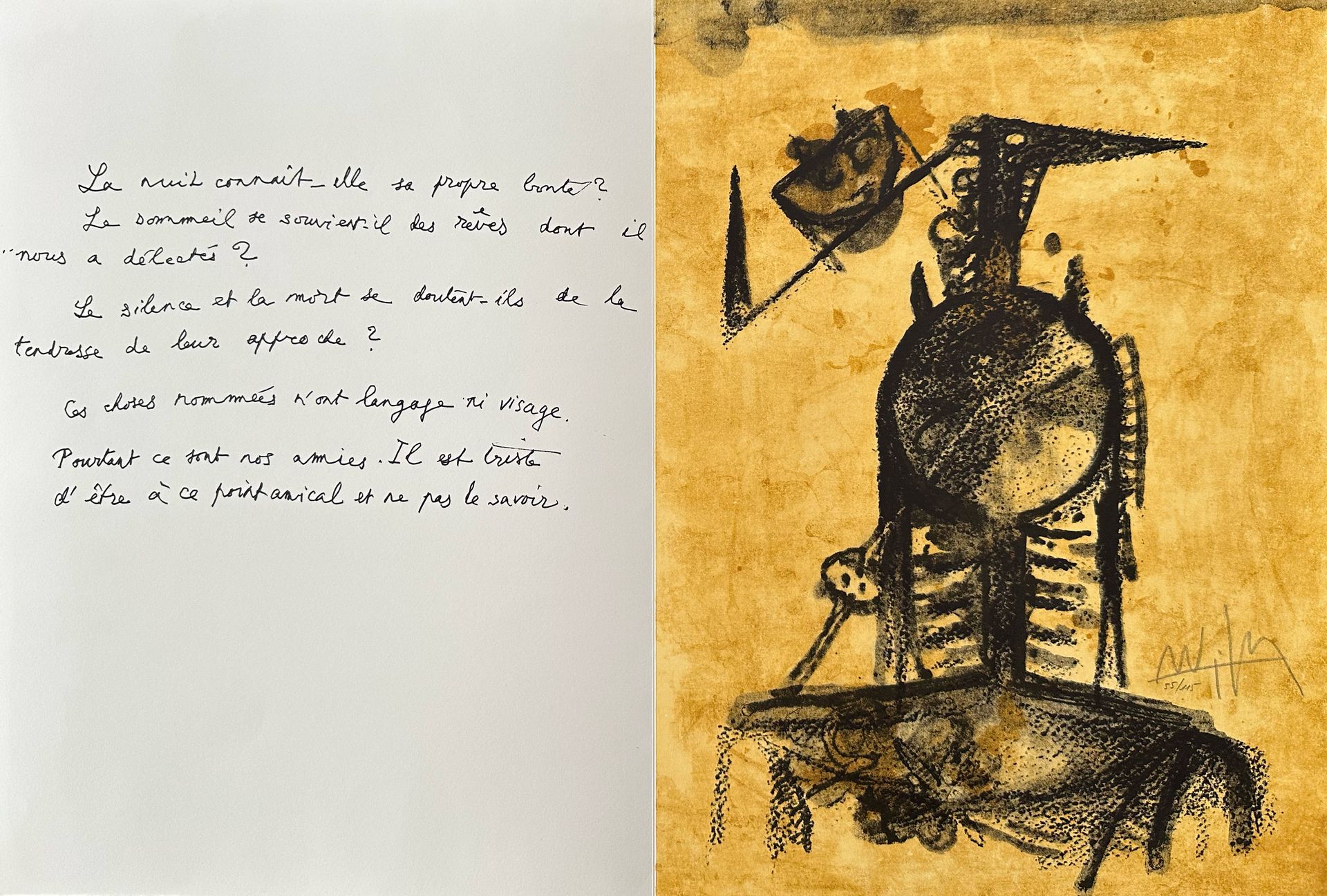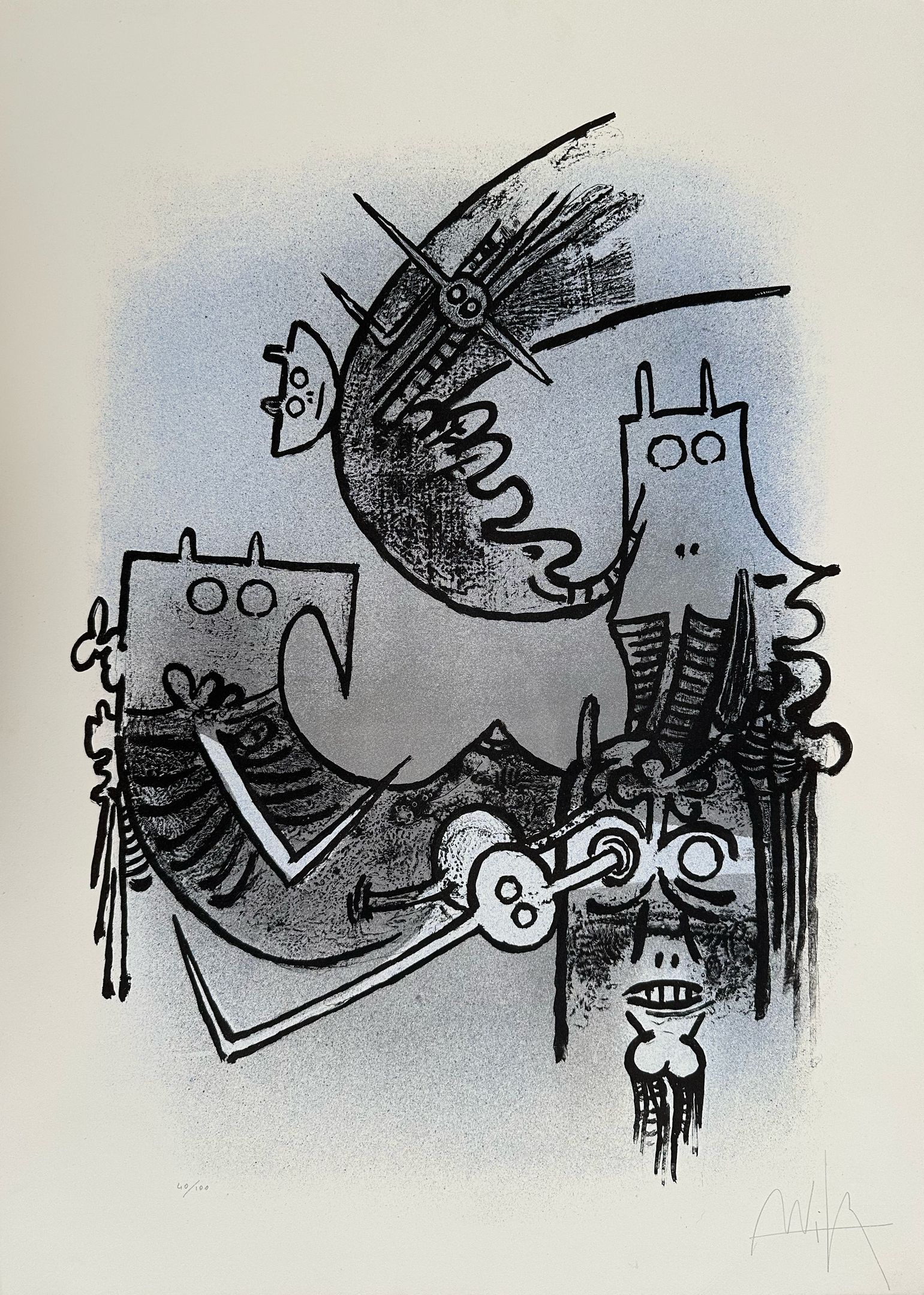
Wifredo Lam
Wifredo Lam studied at the Escuela de Bellas Artes in Havana before moving to Madrid in 1923 to continue his training. In 1938, he relocated to Paris, where he became close with major avant-garde figures including Pablo Picasso, André Breton, and others associated with surrealism. Returning to Cuba in 1941, Lam began to integrate his heritage and modernist influences into a distinct personal style.
Lam’s work is best known for its fusion of Afro-Cuban spirituality, surrealism, and cubism. He created dreamlike compositions filled with hybrid figures — part human, part animal, part plant — often evoking the spirits and deities of Afro-Caribbean religions such as Santería. His use of flattened space, masked faces, and rhythmic, almost mystical compositions reflected both his modernist training and his deep connection to his cultural roots. Lam sought to confront colonialism and racism through a visual language that was both cosmopolitan and deeply personal.
His most iconic painting, The Jungle (1943), housed in the Museum of Modern Art in New York, stands as a landmark of 20th-century art, capturing Lam’s unique vision of cultural hybridity and psychological intensity. Other notable works include Zambezia, Zambezia (1950) and La Mañana Verde (1943). Lam’s art was widely exhibited in Europe, the Americas, and beyond. Major retrospectives have been held at the Centre Pompidou (Paris, 2015–2016), the Museo Reina Sofía (Madrid), and Tate Modern (London), reaffirming his legacy as a global modernist who bridged continents, traditions, and artistic languages.
Collected by major institutions and notable private collectors:
— National Gallery of Art, Washington, D.C.— Tate
— Centre Pompidou
— Museo Reina Sofía
Notable sales and auction records:
— Omi Obini, USD 9,6 million at Sotheby's, New York, 2020— A Trois Centimètres de la Terre, EUR 4,4 million at Sotheby's, Paris, 2017
— Ídolo (Oya/Divinité de l'Air et de la Mort), USD 4,5 million at Sotheby's, New York, 2012
Artworks and Paintings
Biography and Artistic Career Highlights
Wifredo Lam was born on December 8, 1902, in the city of Cienfuegos, Cuba, into a multicultural family: his father was of Chinese origin, and his mother had African and Spanish roots. The artist’s childhood unfolded in an environment of blended cultures and religious traditions — Catholicism, African cults, and Chinese customs. These impressions deeply influenced his later work.
1916 — entered the art school in Havana, where he studied academic painting.
1923 — received a scholarship and went to Spain, settling in Madrid, where he continued his education at the Royal Academy of San Fernando.
1930s — lived in Spain, working in a realist style, inspired by Goya and Velázquez.
1938 — arrived in Paris, where he met Pablo Picasso, Georges Braque, André Breton, and other avant-garde masters. Under their influence, Lam began moving toward Cubism and Surrealism, while maintaining his interest in Afro-Cuban motifs.
1940 — emigrated to Marseille along with a group of artists and intellectuals. There, he engaged actively with the Surrealists and illustrated a collection by André Breton.
1941 — returned to Cuba. This period became crucial for the formation of his individual style: he combined Surrealism and Cubism with images of African masks, Santería cults, and local mythology.
1943 — painted his most famous work, “The Jungle” (La Jungla), now housed in the Museum of Modern Art in New York. This painting brought him international recognition.
1946 — traveled to Haiti, where Lam further immersed himself in Afro-Caribbean rituals, which intensified the mystical and symbolic dimensions of his art.
1950s — held numerous exhibitions in Europe and the Americas, collaborating with galleries in Paris, New York, and Havana. Lam became an important figure in the international avant-garde.
1960s — actively participated in biennials and international exhibitions, gaining recognition as one of the greatest Latin American artists of the 20th century. His work became a bridge between European modernism and Afro-Caribbean culture.
1970s — continued working on graphic series, ceramics, and drawings, maintaining his focus on mythology and spiritual symbols.
On September 11, 1982, Wifredo Lam passed away in Paris. He was buried in Cuba, his homeland. Lam’s work became a unique synthesis of European avant-garde movements and Afro-Caribbean traditions, making him one of the most significant artists of the 20th century. His legacy unites diverse cultures and reveals universal themes of spirituality and human identity.



